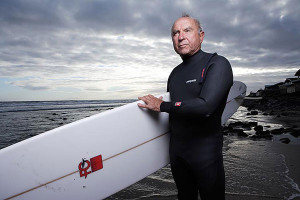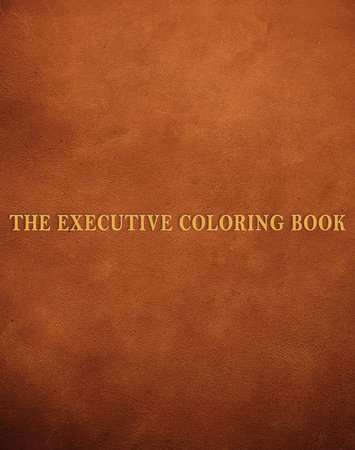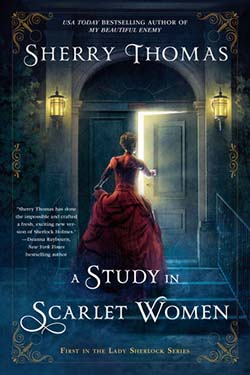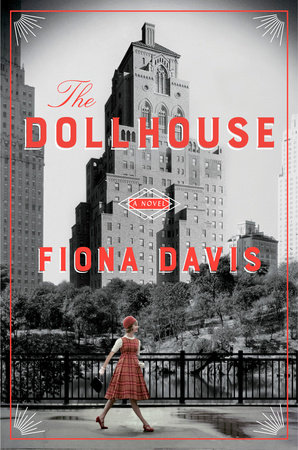
Mohsin Hamid. Photo by Jillian Edelstein

Mohsin Hamid. Photo by Jillian Edelstein



Yvon Chouinard
 Back in 2006, “sustainable business” was just emerging as a concept in mainstream terms. Part of the good news of the past decade is that sustainability has become cooked in to the mix of business education, at the MBA level and down, and Let My People Go Surfing is widely taught. The past decade has been a period of great growth and thus change for Patagonia, and it has also really doubled down and then some on its environmental activism, so there was so much more to tell. Yvon added a good 20% of new material to the book, including an entirely new chapter on environmental activism, and Naomi Klein has added a passionate new foreword. There are revisions throughout the book, my favorite being that it’s now in four-color and Yvon and Patagonia have added many wonderful new photographs. One way or another, all of the additions only sharpen the point, which is that, as Naomi Klein puts it in her foreword, “This is the story of an attempt to do more than change a single corporation – it is an attempt to challenge the culture of consumption that is at the heart of the global ecological crisis.” And to have fun doing it! Contagious fun, contagious righteousness, contagious success – that’s Yvon Chouinard and Patagonia, and that’sLet My People Go Surfing, now cleaned up for the next 10 years, and then some.
Learn more about the book:
Back in 2006, “sustainable business” was just emerging as a concept in mainstream terms. Part of the good news of the past decade is that sustainability has become cooked in to the mix of business education, at the MBA level and down, and Let My People Go Surfing is widely taught. The past decade has been a period of great growth and thus change for Patagonia, and it has also really doubled down and then some on its environmental activism, so there was so much more to tell. Yvon added a good 20% of new material to the book, including an entirely new chapter on environmental activism, and Naomi Klein has added a passionate new foreword. There are revisions throughout the book, my favorite being that it’s now in four-color and Yvon and Patagonia have added many wonderful new photographs. One way or another, all of the additions only sharpen the point, which is that, as Naomi Klein puts it in her foreword, “This is the story of an attempt to do more than change a single corporation – it is an attempt to challenge the culture of consumption that is at the heart of the global ecological crisis.” And to have fun doing it! Contagious fun, contagious righteousness, contagious success – that’s Yvon Chouinard and Patagonia, and that’sLet My People Go Surfing, now cleaned up for the next 10 years, and then some.
Learn more about the book:

![SnipImage[1]](https://assets.penguinrandomhouse.com/wp-content/uploads/2016/12/09140420/SnipImage12.jpg) The Executive Coloring Book by Marcie Hans, Dennis Altman, and Martin A. Cohen was published in 1961. It begins this way: “THIS IS ME. I am an executive. Executives are important. They go to important offices and do important things.” The work of three young advertising copywriters, it became a surprise bestseller and debuted on the New York Times list just a few slots down from Franny and Zooey and To Kill a Mockingbird.
On every page, the authors struck innocent-looking line drawings against deadpan captions. The spark that results is a fierce humor that skewers an era but also comments on the more general phenomenon of corporate culture that is alive and well today, 55 years later. The genius of the thing is that that humor feels perfectly current. So many of today’s biggest companies could stand in as targets for these darts, and so many executives (from the commander-in-chief on down) could benefit from such needling.
So we saw it as our joyful duty to bring The Executive Coloring Book back. After all, while this book might not be a vehicle for meditation, in worrisome times what better therapy is there than humor?
The Executive Coloring Book is on sale March 28, 2017. Stay tuned for more on how to participate in the re-release of this classic coloring book!
The Executive Coloring Book by Marcie Hans, Dennis Altman, and Martin A. Cohen was published in 1961. It begins this way: “THIS IS ME. I am an executive. Executives are important. They go to important offices and do important things.” The work of three young advertising copywriters, it became a surprise bestseller and debuted on the New York Times list just a few slots down from Franny and Zooey and To Kill a Mockingbird.
On every page, the authors struck innocent-looking line drawings against deadpan captions. The spark that results is a fierce humor that skewers an era but also comments on the more general phenomenon of corporate culture that is alive and well today, 55 years later. The genius of the thing is that that humor feels perfectly current. So many of today’s biggest companies could stand in as targets for these darts, and so many executives (from the commander-in-chief on down) could benefit from such needling.
So we saw it as our joyful duty to bring The Executive Coloring Book back. After all, while this book might not be a vehicle for meditation, in worrisome times what better therapy is there than humor?
The Executive Coloring Book is on sale March 28, 2017. Stay tuned for more on how to participate in the re-release of this classic coloring book!



 Which makes it all the more interesting that historical mysteries set during the Victorian and Edwardian era, especially those featuring female protagonists, are determined not to be bound by those constraints. Laurie R. King’s Mary Russell had no interest in what others thought of her. Deanna Raybourn’s Veronica Speedwell, an expert lepidopterist, tells readers up front that she conducts discreet affairs when she is overseas gathering rare species of butterflies and then basically ghosts those lovers when she leaves!
It’s a comment on the pressures, overt and subtle, women still face today that they rebel so hard as fictional historical characters.
When I decided to write a gender-bending Sherlock Holmes story, the first choice I had to make was how my Lady Sherlock would deal with all the strictures on her life that her male counterpart never had to think about. The first book in the series very much revolves around her bid for freedom and what happens when that bid goes wrong.
And now Charlotte Holmes will join a proud sisterhood of strong, cool-under-pressure women who use their wits to save the day.
Learn more about Thomas’ books below!
Which makes it all the more interesting that historical mysteries set during the Victorian and Edwardian era, especially those featuring female protagonists, are determined not to be bound by those constraints. Laurie R. King’s Mary Russell had no interest in what others thought of her. Deanna Raybourn’s Veronica Speedwell, an expert lepidopterist, tells readers up front that she conducts discreet affairs when she is overseas gathering rare species of butterflies and then basically ghosts those lovers when she leaves!
It’s a comment on the pressures, overt and subtle, women still face today that they rebel so hard as fictional historical characters.
When I decided to write a gender-bending Sherlock Holmes story, the first choice I had to make was how my Lady Sherlock would deal with all the strictures on her life that her male counterpart never had to think about. The first book in the series very much revolves around her bid for freedom and what happens when that bid goes wrong.
And now Charlotte Holmes will join a proud sisterhood of strong, cool-under-pressure women who use their wits to save the day.
Learn more about Thomas’ books below!

 How would you describe your collaborative process with Sophia?
The conversation is very open and fluid but also traditional in a lot of ways. For this book, we brainstormed the larger goals, overarching look and feel, and pulled inspiration together and discussed it all in very broad terms. Then Sophia went off and started collecting and creating the pieces of the book. We had a live working document in Google that we both had access to. Sophia would work on it pretty much daily and I would go in every few weeks at the beginning and make comments, notes, ask questions, make suggestions, etc. In this way, the book and its contents kept changing. Once the content felt mostly in place, we started doing the same thing with editing and making final selections, reordering, finding new images and replacing some images, etc. Eventually it felt finished enough to move to a “working manuscript.” Once we had this in place, we would each go off on our own to make notes and then get on the phone to go through the whole book—page by page—discussing our notes in detail, until the next round. We did this until there were no more notes…which was pretty much right up until the end.
How would you describe your collaborative process with Sophia?
The conversation is very open and fluid but also traditional in a lot of ways. For this book, we brainstormed the larger goals, overarching look and feel, and pulled inspiration together and discussed it all in very broad terms. Then Sophia went off and started collecting and creating the pieces of the book. We had a live working document in Google that we both had access to. Sophia would work on it pretty much daily and I would go in every few weeks at the beginning and make comments, notes, ask questions, make suggestions, etc. In this way, the book and its contents kept changing. Once the content felt mostly in place, we started doing the same thing with editing and making final selections, reordering, finding new images and replacing some images, etc. Eventually it felt finished enough to move to a “working manuscript.” Once we had this in place, we would each go off on our own to make notes and then get on the phone to go through the whole book—page by page—discussing our notes in detail, until the next round. We did this until there were no more notes…which was pretty much right up until the end.
 With so many photos, designs, letters, and more, what was the biggest challenge in making this book?
Editing! There were so many great individual pieces that felt worthy of inclusion so the weeding out process felt a little grueling sometimes, though necessary. Plus, every time one design element changes, the whole book changes, and needs to be looked at again as a whole.
What’s your favorite piece of advice in this book?
There is so much great advice in this book. Sophia is terrific at packing a lot of wisdom in her own pithy anecdote. The essays in Nasty Galaxy are small but pack a lot of punch. I think my favorite piece of advice, though, is in the essay “On Fear”: “Get attached. Stay attached. Just don’t forget to keep evolving.” I also like her instructions for How to Check Out of a Fancy Hotel because I couldn’t agree more. Why do people still go through a formal check-out process?
With so many photos, designs, letters, and more, what was the biggest challenge in making this book?
Editing! There were so many great individual pieces that felt worthy of inclusion so the weeding out process felt a little grueling sometimes, though necessary. Plus, every time one design element changes, the whole book changes, and needs to be looked at again as a whole.
What’s your favorite piece of advice in this book?
There is so much great advice in this book. Sophia is terrific at packing a lot of wisdom in her own pithy anecdote. The essays in Nasty Galaxy are small but pack a lot of punch. I think my favorite piece of advice, though, is in the essay “On Fear”: “Get attached. Stay attached. Just don’t forget to keep evolving.” I also like her instructions for How to Check Out of a Fancy Hotel because I couldn’t agree more. Why do people still go through a formal check-out process?
 What is your horoscope according to Nasty Galaxy?
Apparently I am an “intense mother*cker,”: really good at getting people on my side and have some jealous tendencies. I’d say it’s all true.
What would surprise readers to know about the making of this book?
It was harder to write and edit than #GIRLBOSS!
Find out more about this beautiful and unique book here:
What is your horoscope according to Nasty Galaxy?
Apparently I am an “intense mother*cker,”: really good at getting people on my side and have some jealous tendencies. I’d say it’s all true.
What would surprise readers to know about the making of this book?
It was harder to write and edit than #GIRLBOSS!
Find out more about this beautiful and unique book here:
